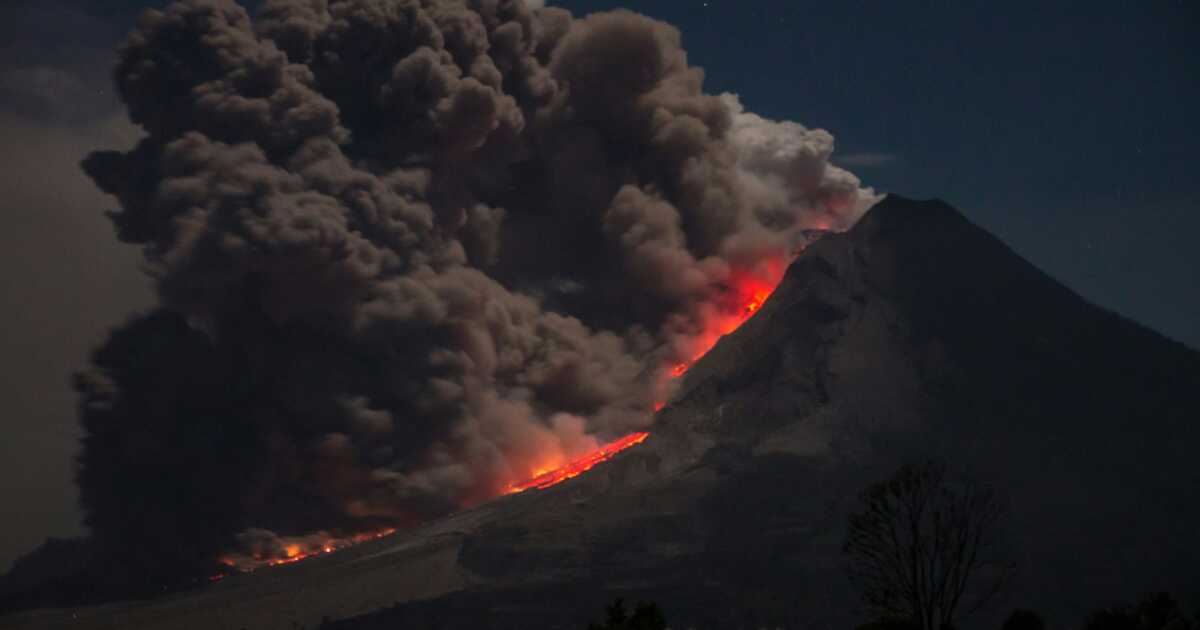Show table of content Hide table of content
Scientists have issued a stark warning, say scientists interviewed by CNN, that a catastrophic super eruption could drastically alter global climate conditions within the next century. This devastating natural phenomenon would release enormous quantities of volcanic materials, potentially triggering worldwide consequences for human civilization. Recent research suggests we may be more vulnerable to such an event than previously understood.
The alarming probability of a major volcanic catastrophe
According to climate specialist Markus Stoffel from the University of Geneva, humanity faces approximately a one-in-six chance of experiencing a massive volcanic eruption during this century. This sobering probability has raised concerns among the scientific community about our collective preparedness for such a cataclysmic event.
“Humanity currently has no comprehensive plan to address this eventuality,” Stoffel warns. The random nature of volcanic activity makes precise prediction nearly impossible, leaving experts to focus on understanding potential impacts and mitigation strategies rather than specific timing or location forecasts.
With approximately 1,600 active volcanoes worldwide, identifying which might produce the next super eruption presents a significant challenge for volcanologists. Some of these sleeping giants have remained dormant for thousands of years, making their potential awakening particularly dangerous due to accumulated pressure. Just as miraculous survivals from unexpected disasters can occur, humanity may need to prepare for volcanic events of unprecedented scale.
Historical records provide compelling evidence of devastating volcanic impacts. The 1815 eruption of Indonesia’s Mount Tambora represents the most recent super eruption, generating global climate disruption so severe that 1816 became known as “the year without summer.” Crop failures, widespread famine, and tens of thousands of deaths resulted from the sudden climate shift. Today’s more populated planet faces potentially greater consequences from a similar event.
Sulfur dioxide: the key agent in volcanic climate disruption
While volcanic eruptions produce various hazardous materials, scientists identify sulfur dioxide as particularly concerning for global climate effects. When volcanoes expel this gas into the upper atmosphere, it forms aerosol particles that reflect sunlight away from Earth, effectively cooling the planet for several years.
Alan Robock, a volcanic specialist from Rutgers University, explains that these sulfur particles can remain suspended in the atmosphere “for several years,” creating a persistent cooling effect. The 1991 Mount Pinatubo eruption in the Philippines, though not classified as a super eruption, released approximately 15 million tons of sulfur dioxide, temporarily reducing global temperatures by 0.5°C.
News This TikToker buys a used van and realizes it has a hidden surveillance device.
A genuine super eruption would likely produce substantially greater sulfur dioxide quantities, potentially triggering more dramatic temperature decreases. This natural cooling might initially seem beneficial given current concerns about extreme temperature changes worldwide, but scientists emphasize that volcanic cooling would create different problems rather than solving climate challenges.
The reflective properties of these airborne sulfur particles interrupt more than just temperature. They can significantly disrupt rainfall patterns, potentially halting crucial monsoon systems that agricultural regions across Asia and Africa depend upon. Unlike the gradual nature of human-induced climate change, volcanic cooling happens abruptly, giving ecosystems and human systems little time to adapt.
Global disruption beyond temperature changes
The consequences of a super eruption would extend far beyond mere temperature reduction. Modern civilization depends on interconnected systems vulnerable to such massive disruption. Agricultural failures from altered weather patterns could trigger food shortages affecting billions of people within weeks or months.
Economic systems would experience severe stress as food prices soar and supply chains collapse. Political stability might deteriorate as nations compete for dwindling resources. Historical patterns suggest that periods of food scarcity often correlate with increased conflict, a particularly concerning prospect in our nuclear-armed world.
Furthermore, the temporary cooling effect would eventually dissipate, allowing human-caused warming to resume with full force. This would create a whiplash effect between cooling and warming that could further destabilize natural systems. Materials like tungsten carbide might retain their value during such crises, but most economic assets would face severe devaluation.
The psychological impact of such an event might prove equally devastating. Modern populations have no living memory of super eruptions, unlike our ancestors who developed cultural adaptations to volcanic threats. Our ability to detect subtle differences between normal and threatening situations—similar to how some can spot minute differences in images—might determine survival rates in affected regions.
Preparing for the inevitable natural disaster
Despite the grim forecasts, scientists emphasize that preparation remains possible and essential. Unlike many natural disasters, volcanic eruptions typically provide warning signs that modern monitoring systems can detect. The challenge lies in developing appropriate societal responses to these warnings.
Expanded food storage systems represent one practical preparation strategy. Just as individuals might prepare their bodies for physical challenges, nations must ready their infrastructures for potential climate disruption.
News Bat wings after 50? Here’s the most effective exercise, according to a coach.
Agricultural research focusing on crop varieties resistant to reduced sunlight and colder temperatures could provide crucial food security. Meanwhile, international cooperation frameworks for resource sharing during prolonged emergencies need development before crisis strikes.
Some researchers suggest historical responses to disasters might offer valuable insights. The symbolic significance of numbers in ancient texts often related to natural disasters, showing how previous civilizations conceptualized and responded to environmental threats.
The intellectual capabilities required to address such complex threats will demand our highest cognitive functions—the kind of problem-solving skills that challenge even those with exceptional intelligence. While the probability of experiencing a super eruption remains relatively low in any given year, the catastrophic potential requires serious attention from scientists, policymakers, and citizens alike.


